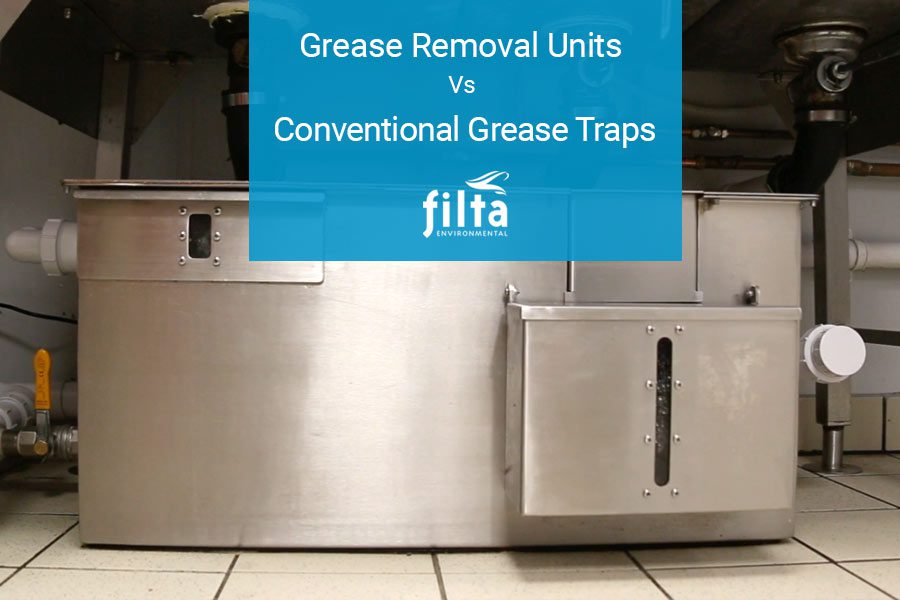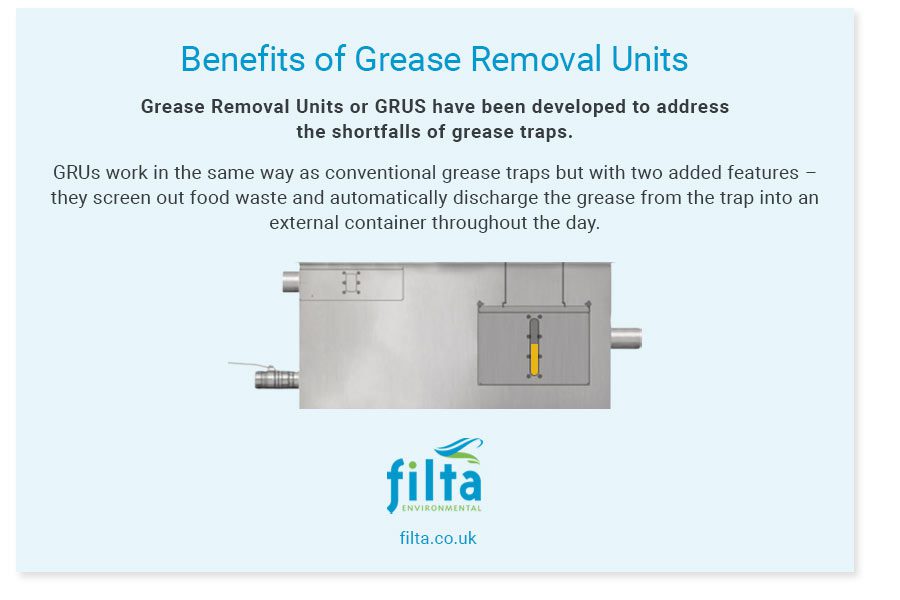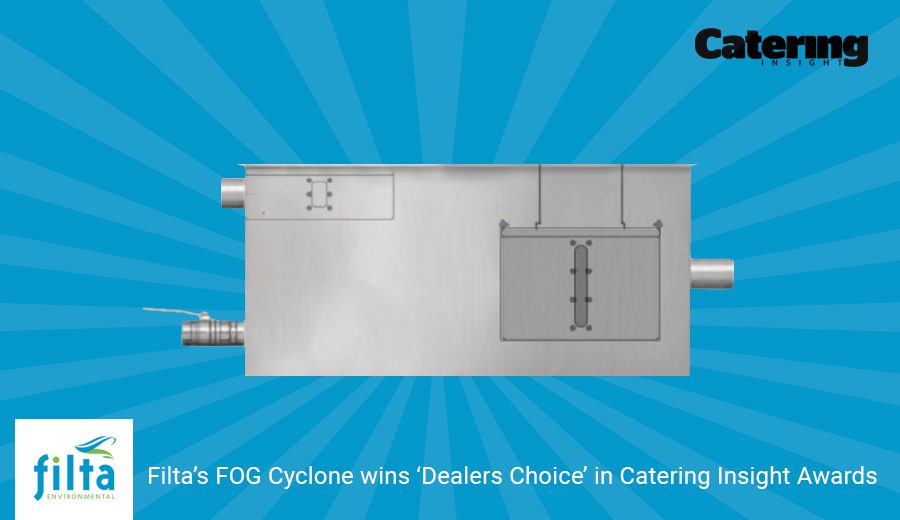Grease Removal Units (GRU) Vs Conventional Grease Traps

Are you a restaurant manager or owner looking to decide between a grease removal unit or a conventional grease trap? For years we’ve been the go to supplier for grease removal units for commercial kitchens and in this post we’ll give you a breakdown of the main differences between GRUs and conventional grease traps so you can make the best choice for your business.
What Is a Conventional Grease Trap?
Benefits of Grease Removal Units
In addition to the performance benefits of GRU the maintenance costs are typically less as waste does not need removing in the same way. Whereas a grease trap requires a high volume of waste removal a GRU service visit is in essence a cleaning and de-silting operation. However it is important to note that staff engagement is key as daily maintenance tasks are required for most GRUs.

Types of Grease Removal Units
- Mechanical Oil Skimming Devices – these units collect grease in a central chamber and use an electric motor to drive a semi-submerged wheel or drum which turns slowly in the trapped grease, a wiper blade is then used to scrape the oil into an external container for disposal.
- Non-mechanical Oil Separation Devices – non-mechanical GRUs such as the FiltaFOG Cyclone use gravity-differential to separate oil from water. In simple terms it is using nature – the fact that oil and water have a different specific gravity. The process is achieved first by using a specially designed chamber to encourage oil and water separation. Secondly, as oil separation completes, the effluent passes to an oil harvest valve (through which only oil is allowed to pass) allowing the recovered oil to be ejected into an oil collection container.
Expert Grease Removal Unit Maintenance
As one of the leading suppliers of commercial kitchen services we maintain all types of GRUs for clients across the UK and beyond. To find out more and to discuss your specific requirements please get in touch today on 01788 550100 or contact us online now.
Own a grease trap? Check out our handy guide to grease trap cleaning.

